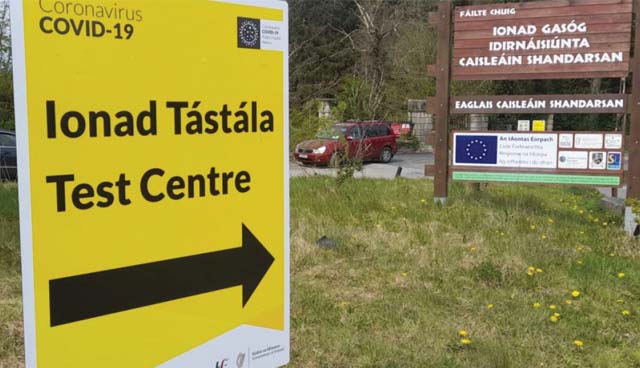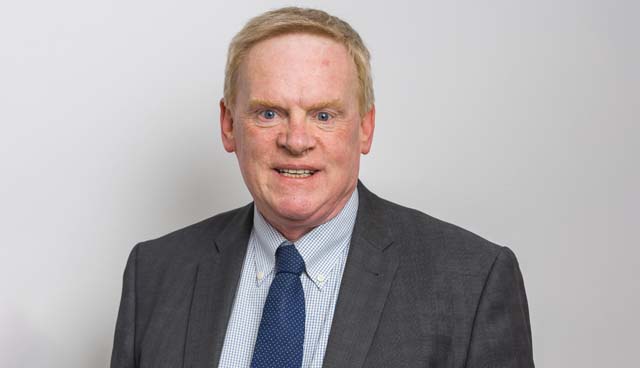Rebuilding health infrastructure for a post-Covid world

Jim Curran, National Director of Estates for the Health Service Executive (HSE) outlines how the Covid-19 pandemic has forced the health sector into fast-tracking infrastructure projects and how it will inform the rebuilding of that infrastructure in a post-pandemic world.
“There was quite a stark ask in relation to what was needed at the beginning of the pandemic,” Curran recounts. “Up to 10,000 beds were needed, we knew that we could not provide these overnight but that we had to act as quickly as possible to bring all our capacity into use. A lot of work was undertaken over a very short period in order to bring facilities back into use. A total of €240 million was invested in establishing some new facilities, such as test centres and swabbing centres.”
Field hospital plans were put in place should the worst have come to worst, with the Citywest Convention Centre and Hotel among the sites acquired on a licensed basis for this possibility. Thankfully, while the health system was under significant pressure, it did not result in the utilisation of field hospitals, Curran emphasises.
“Ultimately, we delivered capacity for circa 600 additional beds if required and that was achieved very quickly,” he says. “Thankfully we did not have to use the beds in Citywest but we are using the facility for other things such as outpatient clinics, test centres and vaccination centres. Our testing centres have been established nationally, with different models attempted. The most effective is the drive-through model where people drive into large car parking areas.”
Along with pressure on niche aspects of health infrastructure such as medical gas supply, crucial amid increasing numbers of patients requiring ventilators, the pandemic also served to emphasise the need to modernise the HSE’s buildings and internal capacity. These processes were underway before the pandemic but fast- tracked when the extent of the Covid crisis became clear.

“Limerick had particularly low bed numbers, so we undertook two projects there to increase capacity, one in the university hospital itself, and another in Croom,” Curran offers as an example. “Our building partners in Clancy Construction brought the project onstream in about 14 weeks, which was remarkable given that it usually requires an average of 14 months.”
Reflecting on the lessons from the Covid crisis, Curran says: “Looking at what we have learned, additional capacity has been a necessity during the pandemic. One of the reasons we have had to have lockdown measures is that the capacity in our health system was being stretched to the limit, so there is a need to create additional bed capacity both in hospitals and in critical care because that is where we are lagging in relation to international norms. We now have a programme to almost double that capacity in hospitals.”
Enhancing capacity in elective only hospitals in Cork, Galway, and Dublin is a component of the National Development Plan, with an emphasis on outpatient care. The objective is to mitigate record waiting lists. Curran expresses the hope that these projects can be fast-tracked and operational within three years. Consolidating additional primary care centres and community diagnostic facilities also aligns with the Sláintecare priority of bringing care closer to home, while ensuring additional mental health facilities and services for people with disabilities.
The rollout of national strategies such as the National Maternity Strategy, which involves the relocation of all standalone maternity hospitals onto hospital sites, are ongoing. The National Cancer Strategy’s radiation oncology programme has seen completion of one centre in Cork, with one in Galway currently under construction and the next phase of expansion into the Dublin centres ongoing.
“Our primary centre construction programme continues,” Curran says, adding: “That is a mix of state investment through the NDP and developer-led operation lease model where the developers construct to our specifications, and we lease from them. That is rolling out at pace, and we hope to have developed a total of 80 centres in 2021.
“Our replacement and refurbishment of existing Community Nursing Units, is a big focus of our next stage of development. The decongregation programme is focused on people with disabilities and mental health issues who were living in secluded residential settings, congregated together in some facilities and we are now realising that for the quality of life of these people, it is better that they are living in the community. We are now moving away from having those congregated settings to providing dwellings for no more than four people living together in the wider community.”
Again, these actions are concurrent with the health system infrastructure needs and the Sláintecare priorities, with the Trauma Strategy set to provide centres that will cover all major traumas in Cork, Dublin, and Galway. The HSE also faces a challenge in meeting its climate objectives with its infrastructure.
“The government mandate is to get down to near zero energy and the health sector, given the 24/7 usage of its buildings, is critical to the success of Ireland delivering on its climate action requirements,” he says. “Investment in infrastructure to meet these requirements will be essential. This will involve replacing a lot of our facilities and we have identified a significant number that we will require.”
Curran concludes: “Some projects to increase capacity that are currently underway include Mater Hospital and Mallow General Hospital, which were highlighted in response to Covid-19 and the deficit in those areas. We will be continuing our ward replacement programme and I think it is fair to say that every hospital in the country has ambitions of becoming a building site over the next few years as we gear up to deliver on the EU healthcare strategies.”





